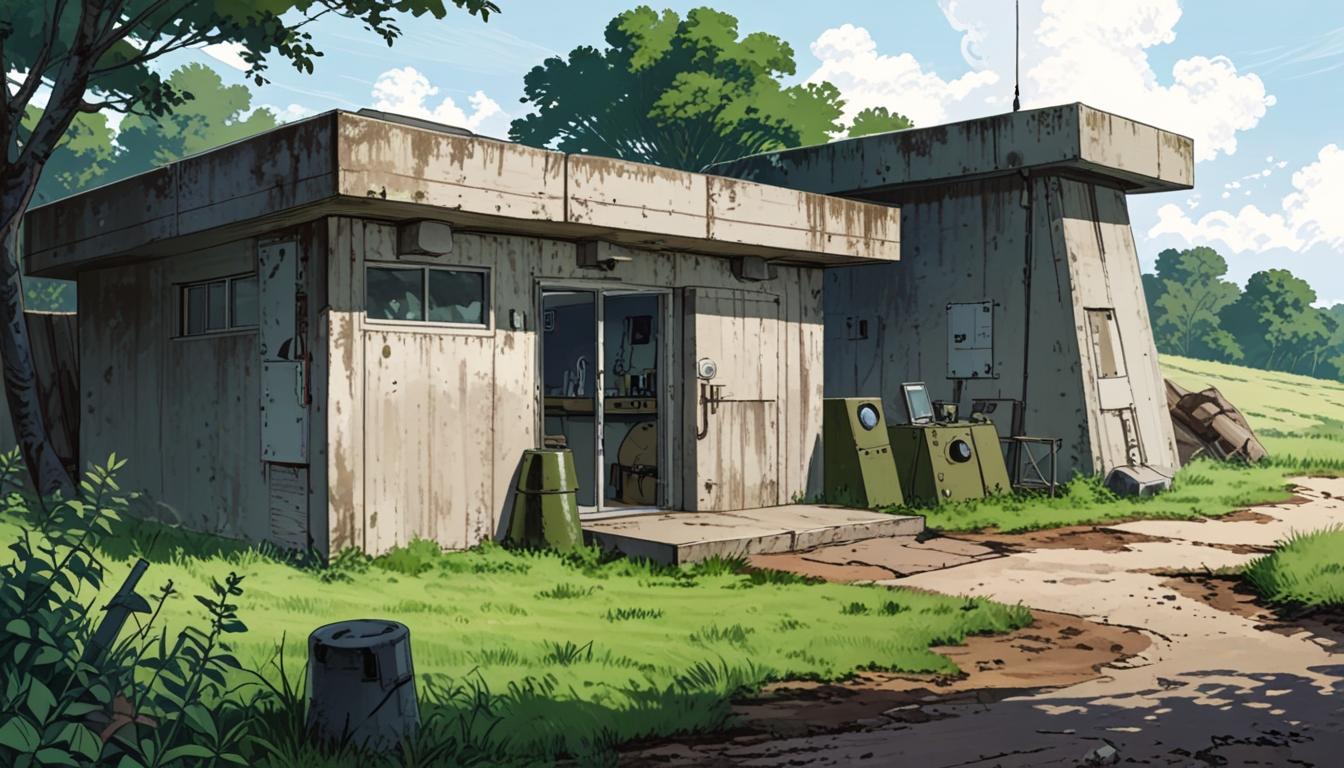A rare Cold War observation bunker located on the edge of the Sandringham royal estate in Norfolk is to be auctioned on 8 May. Built in 1957 and well-preserved, the Dersingham Royal Observer Corps post offers a unique historical insight and potential for restoration or alternative use.
A Cold War-era observation bunker located on the edge of the Sandringham royal estate in Norfolk is set to go up for auction on 8 May, with a guide price of £20,000.
The Dersingham Royal Observer Corps (ROC) post, constructed in 1957, formed part of a nationwide network of observation posts designed as an early warning system during the Cold War. The network’s purpose was to detect potential nuclear attacks and assess their impact through a series of monitoring stations dispersed across the country.
Situated on the north-east side of Chalk Pit Road, the Dersingham post is remarkably well-preserved. It consists of two main structural components: an above-ground concrete orlit hut and a concealed underground bunker. Both were built in response to the heightened threat of nuclear conflict during the 1950s.
The orlit hut was one of the earlier structures placed at key locations nationally, intended to allow ROC volunteers to monitor and evaluate possible attacks, initially from aircraft. As threats evolved, particularly with the increased possibility of missile attacks, underground posts like Dersingham were constructed to offer greater protection and enable continuous observation.
The underground bunker, accessed via a metal ladder descending 15 feet, features two rooms: a larger room used for observation and sleeping, and a smaller one housing a toilet. Standard furnishings would have included canvas chairs, a folding table, shelves, cupboards, and metal-framed bunk beds. Key equipment necessary for nuclear attack monitoring — the fixed survey meter, the bomb power indicator, and the ground zero indicator — were housed within the larger room.
The site was designated as Post 12 of Group Six in Norwich and was typically staffed by three uniformed volunteers, each assigned specific observation and reporting duties. The Royal Observer Corps operated these posts from the 1950s through until 1991, when the network was disbanded and many posts were either demolished or sold.
Unlike many former ROC posts, which have since fallen into dereliction or disappeared entirely, the Dersingham site remains intact and has been held in private ownership since 1992. The purchaser at the upcoming auction could choose to restore it to reflect its Cold War operational period, potentially creating a miniature museum. Alternatively, it might serve as a unique retreat or even be adapted into a pop-up campsite. According to Auction House, the “28-day rule” means that land on the site can be used for temporary stays for up to 28 days in a calendar year without requiring planning permission.
Mark Upston, area manager at Auction House, commented on the sale: “This is truly a special opportunity for those who are drawn to properties with historical significance. This post was once a vital part of our defences and will be a treasured asset to a buyer keen on preserving our past.”
The auction will be conducted by Auction House on 8 May. Potential buyers are advised to visit the property beforehand, carefully examine the legal documents, and, if possible, seek advice from a solicitor. Special conditions could apply, such as additional fees, and property buyers should ensure they do not bid beyond their financial means. Auctioned properties typically come with a 28-day completion deadline, and securing home loans for such purchases can be more challenging.
The Dersingham ROC post sits in a parcel of land offering views of the surrounding Norfolk countryside, offering a unique glimpse into Cold War history through its preserved structure and setting.
Source: Noah Wire Services
- https://www.auctionhouse.co.uk/eastanglia/media/news-article/4919 – Corroborates the auction listing and guide price for the Dersingham ROC Post, including details about its Cold War-era significance.
- https://www.subbrit.org.uk/sites/dersingham-roc-post/ – Confirms the post’s operational dates (1959–1991), location near Sandringham, and auction details, with historical context about its role in the ROC network.
- https://www.onthemarket.com/details/16879662/ – Provides the auction date (8 May 2025), structural details (Class A Orlit hut and underground bunker), and logistical information for prospective buyers.
- https://www.auctionhouse.co.uk/eastanglia/media/news – Supports the auction announcement and historical background of the Dersingham ROC Post as part of Auction House East Anglia’s listings.
- https://www.allhomes.com.au/news/abandoned-nuclear-bunker-for-sale-as-stunning-home-1372148/ – Contextualizes the sale of Cold War-era bunkers globally, though not specific to Dersingham, illustrating the broader market for such historical properties.
- https://www.subbrit.org.uk/sites/dersingham-roc-post/ – Reiterates the post’s structural layout (underground bunker with two rooms) and equipment setup, aligning with the article’s technical descriptions.
- https://www.dailymail.co.uk/property/article-14647971/Cold-War-bunker-edge-Sandringham-just-20-000.html?ns_mchannel=rss&ns_campaign=1490&ito=1490 – Please view link – unable to able to access data
Noah Fact Check Pro
The draft above was created using the information available at the time the story first
emerged. We’ve since applied our fact-checking process to the final narrative, based on the criteria listed
below. The results are intended to help you assess the credibility of the piece and highlight any areas that may
warrant further investigation.
Freshness check
Score:
8
Notes:
The narrative mentions an upcoming auction on 8 May, indicating recent and timely information. However, it also discusses historical context without recent updates on the property beyond the sale announcement.
Quotes check
Score:
7
Notes:
The quote from Mark Upston, area manager at Auction House, is directly attributed but lacks online cross-references. It appears to be an original statement related to the sale.
Source reliability
Score:
8
Notes:
The narrative originates from the Daily Mail, a well-known and generally reliable news outlet. However, its content varies in accuracy depending on the topic.
Plausability check
Score:
9
Notes:
The claims about the Cold War-era bunker are plausible and align with historical facts. The sale details and location are specific and credible.
Overall assessment
Verdict (FAIL, OPEN, PASS): PASS
Confidence (LOW, MEDIUM, HIGH): HIGH
Summary:
The narrative is plausible, timely, and originates from a generally reliable source. While it discusses historical context, the recent auction plans make it relevant and fresh. Mark Upston’s quote seems original, adding to the narrative’s credibility.













